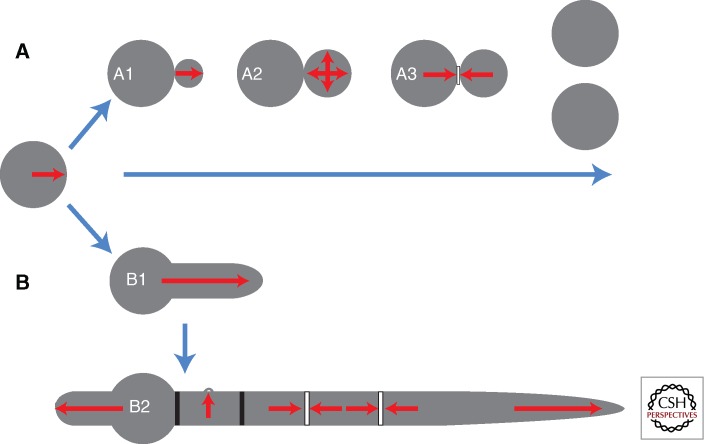Figure 1.
Distinct patterns of morphogenesis in yeast and hyphal cells. Yeasts and filamentous fungi typically initiate growth as nonpolarized cells or spores. Budding yeasts such as Saccharomyces cerevisiae or Cryptococcus neoformans (A) establish an axis of polarity that directs the emergence of a new bud (A1). Following a period of polarized growth, depolarization enables the formation of an ellipsoidal bud (A2). Following nuclear division, the construction and controlled degradation of a septum (A3) results in cell separation. Filamentous fungi such Aspergillus nidulans and Candida albicans (B) establish a polarity axis that directs the emergence of a germ tube (B1). Unlike yeasts, sustained polar growth leads to the formation of a hypha that grows by apical extension. Moreover, hyphae are able to simultaneously support multiple polarity axes to allow the formation of septal cross-walls (bars) and lateral branches (B2). For many filamentous fungi, spores also generate secondary germ tubes once they are partitioned from the primary hypha by a septum.

